
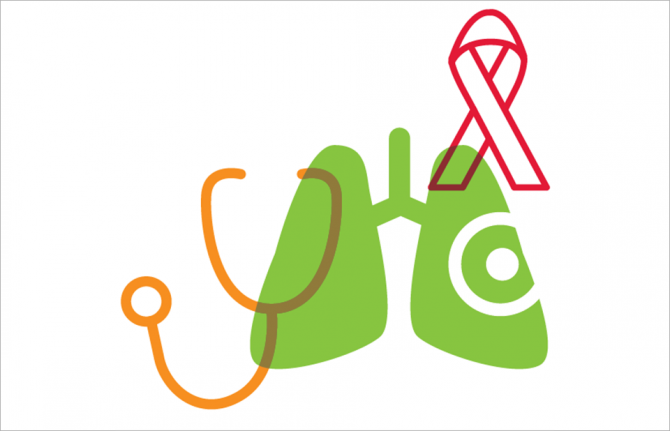
Press Statement
Impact of COVID-19 hits hard as TB deaths among people living with HIV rise for the first time since 2006
23 March 2022 23 March 2022On World Tuberculosis Day 2022, UNAIDS is calling for urgency in diagnosing and treating TB as TB deaths among people living with HIV rise for the first time after years of progressive decline
GENEVA, 23 March 2022—Tuberculosis (TB) is the leading cause of death among people living with HIV, accounting for around one third of AIDS-related deaths globally. Coordinated and scaled up efforts to prevent, diagnose and treat the two diseases had resulted in a 68% decline in TB deaths among people living with HIV between 2006 and 2019. However, in its 2021 Global Tuberculosis Report, the World Health Organization announced that TB deaths among people living with HIV increased for the first time in 13 years, from 209 000 in 2019 to 214 000 in 2020.
“The increase in TB deaths among people living with HIV is alarming and demonstrates the fragility of pandemic progress,” said Winnie Byanyima, Executive Director of UNAIDS. “When COVID-19 hit, global attention on HIV and TB shifted as the world focused on tackling the new pandemic. This has meant lives needlessly lost and important targets missed for HIV, TB and other diseases. Urgent action and increased investments are needed to get us back on track.”
People living with HIV are 18 times more likely to develop TB disease. Although around 85% of people who develop TB disease can be successfully treated, the treatment success rates for people living with HIV are much lower, at around 77%. This demonstrates the importance of scaling up prevention efforts as well as treatment for the two diseases.
Concerted and collective action in this area has saved lives in recent years. Between 2018 and 2020, some 7.5 million people living with HIV were given preventive TB treatment, surpassing the global target of 6 million. But much more needs to be done to address the underlying inequalities that continue to fuel the spread of HIV and TB.
Refugees and displaced people are at particularly high risk of developing TB. At the end of 2020, the Office of the United Nations High Commissioner for Refugees estimated that 82.4 million people around the world were displaced from their homes. The war in Ukraine has already forced 3.5 million people to flee the country and millions more are internally displaced. It is critical that Ukraine and its neighbouring countries receive urgent support to provide essential health services for people affected by the war, including services for TB and HIV.
“In this time of crisis, there is an opportunity to build a pandemic-resilient future if leaders work together to tackle the inequalities that endanger us all,” said Ms Byanyima. “While AIDS, TB and COVID-19 each spread in unique ways, we are watching as each is driven by social and economic inequality that leaves some communities more vulnerable and the whole world at risk. We can address those inequalities, or we can let these pandemics continue—the power is in our hands.”
The Global Fund to Fight AIDS, Tuberculosis and Malaria (Global Fund) is the leading international funder of TB programmes; however, COVID-19 has had a devastating impact. Between 2019 and 2020, the number of people treated for TB in the countries where the Global Fund invests fell by around 1 million. This year, at its seventh replenishment, the Global Fund is calling for an additional US$ 18 billion to save 20 million lives and get the world back on track towards ending HIV, TB and malaria. To end the three diseases by 2030 and build strong national health systems to respond to emerging pandemics, it is essential that the Global Fund be fully funded.
UNAIDS is continuing to work with partners to reach the HIV/TB targets set for 2025, which include ensuring that 90% of people living with HIV receive preventive treatment for TB and reducing TB-related deaths among people living with HIV by 80% (from a 2010 baseline). To make this happen will require the Global Fund to be fully funded and that investments be made in research and development, in expanding services as well as in adopting new and innovative strategies to reach everyone in need.
UNAIDS
The Joint United Nations Programme on HIV/AIDS (UNAIDS) leads and inspires the world to achieve its shared vision of zero new HIV infections, zero discrimination and zero AIDS-related deaths. UNAIDS unites the efforts of 11 UN organizations—UNHCR, UNICEF, WFP, UNDP, UNFPA, UNODC, UN Women, ILO, UNESCO, WHO and the World Bank—and works closely with global and national partners towards ending the AIDS epidemic by 2030 as part of the Sustainable Development Goals. Learn more at unaids.org and connect with us on Facebook, Twitter, Instagram and YouTube.
Contact
UNAIDS GenevaSophie Barton-Knott
tel. +41 79 514 68 96
bartonknotts@unaids.org
UNAIDS Media
communications@unaids.org
Our work

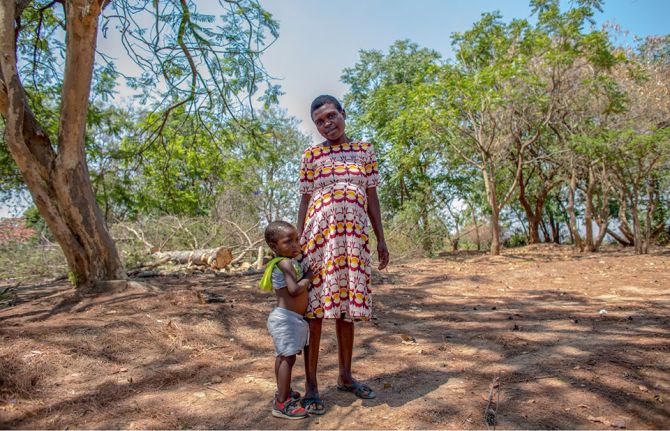
Press Statement
UNAIDS welcomes parliament’s decision to repeal the law that criminalizes HIV transmission in Zimbabwe
18 March 2022 18 March 2022GENEVA, 18 March 2022—UNAIDS congratulates Zimbabwe’s parliament for repealing section 79 of the Criminal Law Code, which criminalizes HIV transmission. A new marriage bill adopted by parliament that repeals the criminal code section is to be signed into law by the president. The criminalization of HIV transmission is ineffective, discriminatory and undermines efforts to reduce new HIV infections. Such laws actively discourage people from getting tested for HIV and from being referred to the appropriate treatment and prevention services.
“Public health goals are not served by denying people their individual rights and I commend Zimbabwe for taking this hugely important step,” said UNAIDS Executive Director, Winnie Byanyima. “This decision strengthens the HIV response in Zimbabwe by reducing the stigma and discrimination that too often prevents vulnerable groups of people from receiving HIV prevention, care and treatment services.”
UNAIDS has worked closely with Zimbabwe’s National AIDS Council, Zimbabwe Lawyers for Human Rights, parliamentarians, civil society activists and communities to advocate for the repeal of the law criminalizing HIV. Overly broad and inappropriate application of criminal law against people living with HIV remains a serious concern across the globe. More than 130 countries worldwide still criminalize HIV non-disclosure, exposure and transmission through either specific or general criminal legislation.
In 2019, Zimbabwe completed a legal environment assessment, which identified the criminalization of HIV transmission as a barrier to health care and a driver of stigma and discrimination for people living with HIV and other key populations. Since then, the United Nations Development Programme has worked with key populations and other stakeholders, convening meetings with parliamentarians and other partners to advance the recommendations of the legal environment assessment.
In 2018, UNAIDS, the International Association of Providers of AIDS Care and the International AIDS Society convened an expert group of scientists who developed an Expert Consensus Statement on the Science of HIV in the Context of Criminal Law. The statement calls on the criminal justice system to ensure that science informs the application of the law in criminal cases related to HIV.
Zimbabwe has made great progress in the response to HIV over the past decade. It is estimated that 1.2 million of the 1.3 million people living with HIV in the country are now on life-saving medicines. AIDS-related deaths have decreased by 63% since 2010, with new HIV infections down by 66% over the same period.
UNAIDS
The Joint United Nations Programme on HIV/AIDS (UNAIDS) leads and inspires the world to achieve its shared vision of zero new HIV infections, zero discrimination and zero AIDS-related deaths. UNAIDS unites the efforts of 11 UN organizations—UNHCR, UNICEF, WFP, UNDP, UNFPA, UNODC, UN Women, ILO, UNESCO, WHO and the World Bank—and works closely with global and national partners towards ending the AIDS epidemic by 2030 as part of the Sustainable Development Goals. Learn more at unaids.org and connect with us on Facebook, Twitter, Instagram and YouTube.
Our work
Region/country

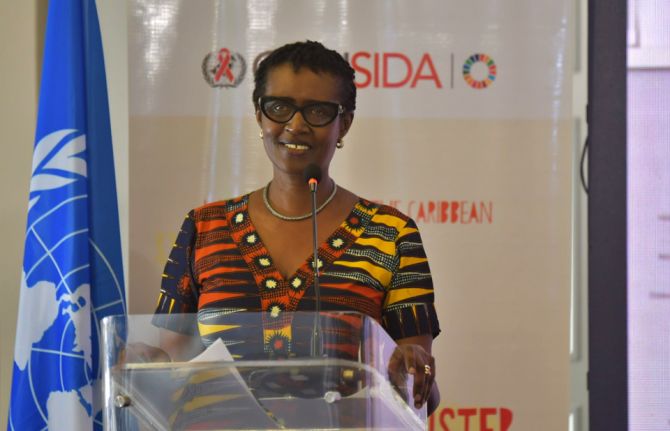
Press Statement
UNAIDS Executive Director’s message on International Day for the Elimination of Racial Discrimination
21 March 2022 21 March 202221 March 2022
Winnie Byanyima
Executive Director of UNAIDS
Under-Secretary-General of the United Nations
It has been more than half a century since the United Nations proclaimed the 21 March as the International Day for the Elimination of Racial Discrimination. On that day in 1960 police opened fire on a crowd of peaceful protesters standing up and speaking out against apartheid in South Africa. Dozens were killed that day. It took a further 30-year bitter battle for apartheid legislation to be repealed, during which time millions of black Africans were removed from their homes and forced into segregated neighbourhoods. The world said never again…
Yet today racism continues to thrive, deepening inequalities, fracturing societies and denying people their basic human rights, including their right to health.
Racism is a public health and human rights issue of global concern. It is recognised that racism is a key determinant of disease and defines who has access to life-saving prevention, treatment, quality health care and overall well-being.
The large racial and ethnic disparities in access to HIV services are evident. Although black Africans account for the vast majority of the population in South Africa and for the large majority of people living with HIV, the public sector services on which black South Africans rely are typically of poorer quality than the private sector services available to white South Africans. In the United States of America, African American people account for 12% of the national population but for 41% of new HIV diagnoses and AIDS-related deaths. To end AIDS it is imperative to close the inequalities that drive it and that includes addressing racial inequalities.
History should have taught us all the most appalling life-costing consequences of racism and inequity, yet racism remains rife across countries and within countries. The COVID-19 pandemic and ensuing vaccine apartheid is a stark reminder of this and has cost each one of us the quickest and least harmful exit route from the crisis.
Failure to tackle racism will continue to cost millions of lives and livelihoods around the world; to stall progress on tackling poverty; to block development efforts and threaten global public health and economic security. Because, make no mistake, the costs of inequality are not confined to those living in the poorest countries.
All human beings are born free and equal in dignity and rights. On the International Day for the Elimination of Racial Discrimination we must chart a new path to secure the rights of all people in all nations and raise our voices for action against racism.
UNAIDS
The Joint United Nations Programme on HIV/AIDS (UNAIDS) leads and inspires the world to achieve its shared vision of zero new HIV infections, zero discrimination and zero AIDS-related deaths. UNAIDS unites the efforts of 11 UN organizations—UNHCR, UNICEF, WFP, UNDP, UNFPA, UNODC, UN Women, ILO, UNESCO, WHO and the World Bank—and works closely with global and national partners towards ending the AIDS epidemic by 2030 as part of the Sustainable Development Goals. Learn more at unaids.org and connect with us on Facebook, Twitter, Instagram and YouTube.

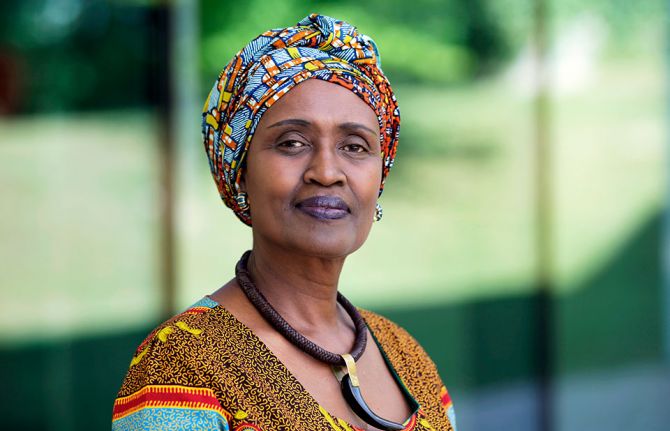
Press Statement
UNAIDS Executive Director's message on International Women’s Day 2022
08 March 2022 08 March 20228 March 2022
Winnie Byanyima
Executive Director of UNAIDS
Under-Secretary-General of the United Nations
Congratulations on International Women’s Day to all whose determination and solidarity is the light of hope and the power for change.
Women are not waiting to be offered a seat at the table, they are bringing their own fold-up chair.
This year’s theme calls for “Gender equality today for a sustainable tomorrow”. As the women’s movements have brought to the fore, and as all the evidence demonstrates, every development goal depends on ensuring the rights of all women and girls.
Gender inequality is a threat to everyone. We cannot uphold patriarchy and defeat AIDS.
The COVID-19 crisis has exacerbated the intersecting inequalities women face. Surges have been reported in gender-based violence, forced child marriages and teenage pregnancies. Almost one in two women reported that they or a woman they know experienced violence since the COVID-19 pandemic started. Calls to helplines have increased fivefold in some countries during the pandemic. Violence against and harassment of lesbian, gay, bisexual, transgender and intersex people has increased, as has stigma and discrimination against marginalized communities. The trajectory to gender parity, which already had been 100 years away, is now 36 more years away.
The goal cannot only be to get back to normal, however: normal was the problem. Instead, leaders need to seize this moment of crisis and opportunity to secure transformation. They need to deliver now on the bold policy shifts and upscaled investments that will ensure equality.
We must end gender-based violence. Violence violates the dignity and freedom of women. Violence drives the AIDS pandemic. In areas of high HIV burden, women subjected to intimate partner violence face up to a 50% higher chance of acquiring HIV.
We must remove all barriers to access to sexual and reproductive health and rights. Only 55% of women and adolescent girls report being in control of decisions about their own sexual and reproductive health and rights. Maternal mortality is the leading cause of death for adolescent girls aged 15–19 years globally, and HIV is the third leading cause of death among women aged 15–49 years—both preventable when women control their own bodies.
We must ensure that every girl is educated and empowered. Research shows that completion of secondary education can reduce a girl’s risk of acquiring HIV by up to half, and by even more if this is complemented by a package of rights and services. We need all girls, including those who dropped out during the COVID-19 pandemic and those who were out of school even before COVID-19, in school, safe and strong.
As countries struggle with the current fiscal challenges, services vital for gender equality are among sectors that are suffering the biggest budget cuts. If we do not find the money, we will all pay a much higher price as a consequence.
The only effective route map to ending AIDS, achieving the Sustainable Development Goals and ensuring health, rights and shared prosperity, is a feminist route map. Equality is the means of progress and is the right of every woman.
Women, in all your wonderful diversity, we the United Nations are on your side, and by your side.
UNAIDS
The Joint United Nations Programme on HIV/AIDS (UNAIDS) leads and inspires the world to achieve its shared vision of zero new HIV infections, zero discrimination and zero AIDS-related deaths. UNAIDS unites the efforts of 11 UN organizations—UNHCR, UNICEF, WFP, UNDP, UNFPA, UNODC, UN Women, ILO, UNESCO, WHO and the World Bank—and works closely with global and national partners towards ending the AIDS epidemic by 2030 as part of the Sustainable Development Goals. Learn more at unaids.org and connect with us on Facebook, Twitter, Instagram and YouTube.

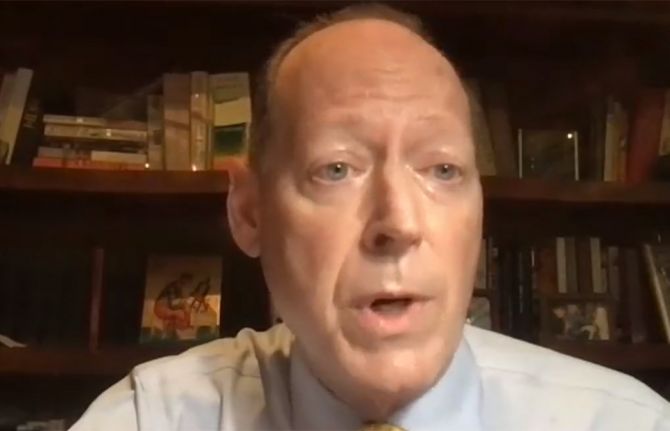
Press Statement
Remembering a global health advocate and renowned doctor
07 March 2022 07 March 2022UNAIDS is deeply saddened at the death of Paul Farmer
GENEVA, 11 March 2022—UNAIDS is deeply saddened at the death of Paul Farmer, anthropologist, doctor and global health champion. He was Kolokotrones University Professor and Chair of the Department of Global Health and Social Medicine at Harvard Medical School, Chief of the Division of Global Health Equity at Brigham and Women’s Hospital in Boston and co-founder of Partners in Health.
“Paul Farmer fought for social justice and human rights and passionately believed in the right to health for all,” said Winnie Byanyima, the Executive Director of UNAIDS. “His work saved millions and showed us the way to reach health care with dignity.”
Partners in Health, a social justice organization founded more than three decades ago, establishes long-term relationships with sister organizations based in settings of poverty. Its main goal is to bring the benefits of modern medical science to those most in need.
In 2000, Mr Farmer and colleagues proved that community-based approaches to HIV treatment in poor settings worked. In 2000, an estimated 4.7 to 8.9 million African children aged 0–17 years had lost one or both parents due to AIDS and HIV had become the world’s leading infectious cause of death among adults with more than 90% of those deaths occurring in low- and middle-income countries. Many had argued that the high cost of antiretroviral medicines (more than US$ 10 000 annually) and the lack of health infrastructure would mean that progress against AIDS would be impossible, but Mr Farmer and his team proved them wrong. His pilot HIV treatment programme in a poor community in rural Haiti that relied on an existing tuberculosis-control infrastructure showed that positive results could be made among people with advanced HIV.
Mr Farmer also advocated that HIV treatment could reinvigorate HIV prevention programmes and argued that, from his experience in Haiti and Rwanda, the rollout of effective antiretroviral therapy lessened HIV-related stigma and discrimination.
In 2012, Mr Farmer and his team celebrated the fact that almost 10 million people living in low- and middle-income countries were on antiretroviral therapy. Later, he focused on people dying of hepatitis C, like HIV a treatable and preventable disease, and regretted that at the time of his death nearly 10 million people living with HIV still did not have access to treatment.
In late November 2021, Mr Farmer joined a virtual UNAIDS panel ahead of World AIDS Day. He stressed that all human lives have the same value and that everyone has the inalienable right to be healthy and to fulfil their potential. Drawing parallels between COVID-19 and HIV, he said, “Inequality is a major driver of pandemics in general. As with AIDS as with structural racism, gender inequality and various forms of social marginalization, active processes continue to structure risk for COVID-19 and also for the fruits of science that have been marshalled to fight it.”
UNAIDS is saddened by the death of Prof Paul Farmer, a passionate advocate for HIV treatment, who showed the world that AIDS-related deaths can be reversed with access, rights & compassion. The global health community has lost a pioneering leader, but his work will continue on. pic.twitter.com/UVS7JP8xuj
— UNAIDS (@UNAIDS) February 21, 2022
He added, “We are now living in a time of vaccine apartheid ... were we to have had a vaccine for HIV, it would be a similar challenge. So, it is, in fact, not two different pandemics posing two discreet sets of challenges but two colliding pandemics.”
As Mr Farmer repeated over and over again during his life, it is our collective duty to take the steps needed to tackle inequalities. UNAIDS, in its 2021 World AIDS Day report, Unequal, unprepared, under threat: why bold action against inequalities is needed to end AIDS, stop COVID-19 and prepare for future pandemics, warned that if the transformative measures needed to end AIDS are not taken, the world will also stay trapped in the COVID-19 crisis and remain dangerously unprepared for the pandemics to come.
Partners in Health has organized an online memorial service at 10:00–12:00 Eastern Time (16:00–18:00 Central European Time) on 12 March 2022 to honour his work.
Region/country

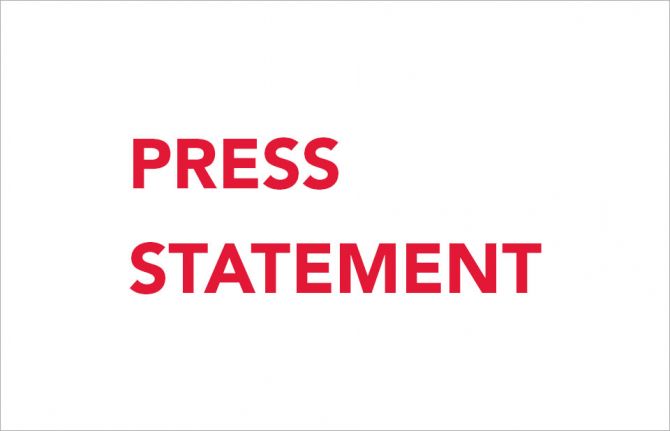
Press Statement
UNAIDS urges protection and continuity of health and HIV services for people living with and affected by HIV in Ukraine
25 February 2022 25 February 2022GENEVA, 25 February 2022—Amidst the ongoing military offensive against Ukraine, UNAIDS is calling for the protection of health workers and uninterrupted continuation of HIV and health services for all people, including people living with and affected by HIV. Ukraine has the second largest AIDS epidemic in the region. It is estimated that there are 260 000 people living with HIV in Ukraine, 152 000 of whom are on antiretroviral therapy, medication that needs to be taken daily for people to remain alive and well.
“People living with HIV in Ukraine only have a few weeks of antiretroviral therapy remaining with them, and without continuous access their lives are at risk,” said Winnie Byanyima, UNAIDS Executive Director. “The hundreds of thousands of people living with and affected by HIV in Ukraine must have unbroken access to life-saving HIV services, including HIV prevention, testing and treatment.”
To date, the Government of Ukraine, together with civil society and international organizations, has implemented one of the largest and most effective HIV responses in eastern Europe and central Asia. However, with the ongoing military offensive, the efforts and gains made in responding to HIV are in serious risk of being reversed, putting even more lives in danger.
The right to health and access to HIV services must always be protected, and health workers, representatives of civil society and their clients must never be targets in a conflict. The ongoing military conflict has affected everyone in Ukraine but is likely to be particularly hard for people living with HIV and key populations, including people who use drugs, sex workers, gay men and other men who have sex with men and transgender people.
As highlighted by the United Nations Secretary-General, the United Nations is committed to support people in Ukraine, who have already suffered from “so much death, destruction and displacement” from the military offensive, in their time of need.
With the support of the Global Fund to Fight AIDS, Tuberculosis and Malaria, the United States President’s Emergency Plan for AIDS Relief and UNAIDS, the Government of Ukraine and civil society partners have delivered HIV prevention and treatment services for people living with HIV and key populations across Ukraine for many years and stand ready to give further support during the ongoing crisis.
UNAIDS staff remain on the ground in Ukraine, working to ensure that people living with HIV and key populations in Ukraine have continued access to life-saving services, with a particular focus on the most vulnerable civilians. UNAIDS will continue to support HIV prevention, testing, treatment, care and support for people across Ukraine affected by the crisis.
UNAIDS
The Joint United Nations Programme on HIV/AIDS (UNAIDS) leads and inspires the world to achieve its shared vision of zero new HIV infections, zero discrimination and zero AIDS-related deaths. UNAIDS unites the efforts of 11 UN organizations—UNHCR, UNICEF, WFP, UNDP, UNFPA, UNODC, UN Women, ILO, UNESCO, WHO and the World Bank—and works closely with global and national partners towards ending the AIDS epidemic by 2030 as part of the Sustainable Development Goals. Learn more at unaids.org and connect with us on Facebook, Twitter, Instagram and YouTube.
Region/country


Press Statement
Investment case for the Global Fund's seventh replenishment technical briefing and discussion
23 February 2022 23 February 2022Message by Winnie Byanyima, Executive Director of UNAIDS and Under-Secretary-General of the United Nations
Excellencies, distinguished guests, colleagues and friends,
I am sorry not to be with you in person today.
This year will be 41 years since the first cases of AIDS were reported, 26 years since the Joint United Nations Programme on HIV/AIDS started its work and 21 years since the Global Fund to Fight AIDS, Tuberculosis and Malaria (Global Fund) partnership came into existence. Since then, communities, countries, activists, technical partners and donors have come together to deliver impressive results.
Throughout it all, the Global Fund has been a key player and an important funder of critical interventions. Thanks to Global Fund grants, AIDS-related deaths have dropped by 65% and new HIV infections by 54% since 2002. Global Fund grants support 22 million people on life-saving HIV treatment, keeping them healthy and strong.
And yet the world did not meet the 2020 HIV targets. Progress, which was already off track, is now under even greater strain as the COVID-19 crisis continues to rage, disrupting HIV prevention and testing services, schooling, violence prevention programmes and more. We know that HIV infection makes a person much more likely to die of COVID-19. We also know that sub-Saharan Africa is home to two thirds of people living with HIV. But just over 12% of people in Africa have received two doses of a COVID-19 vaccine. This is a terrible health injustice and one that the AIDS community is far too familiar with given the history of unequal access to the first antiretroviral medicines.
We know that new HIV infections and AIDS-related deaths follow the fault-lines of inequality.
Women and girls account for the majority of new HIV infections in sub-Saharan Africa—six in seven new HIV infections among adolescents are among adolescent girls. This shocking disparity all is about discrimination against girls and women in society and social norms that tolerate violence and exclusion.
In 2020, key populations, including sex workers, gay men and other men who have sex with men, people who inject drugs and transgender people, and their sexual partners accounted for 39% of new HIV infections in sub-Saharan Africa, 65% of new infections globally and a staggering 94% in the Asia–Pacific region.
To close the inequality gaps that drive AIDS, last year we adopted the Global AIDS Strategy 2021–2026: End Inequalities, End AIDS. That strategy sets out evidence-informed priority actions and bold targets to get every country and every community on track to end AIDS as a public health threat by 2030.
Achieving the goals and targets of the Global AIDS Strategy 2021–2026 requires that annual HIV investments in low- and middle-income countries rise to a peak of US$ 29 billion by 2025. This is of course a shared responsibility, with domestic and international resources coming together.
The strategy was reaffirmed by the bold United Nations Political Declaration on AIDS, adopted at the United Nations General Assembly in June last year. The new Global Fund strategy is very much in line with the path the world has chosen to end AIDS.
We now need a successful seventh replenishment in order to reach the agreed targets and get back on track towards the 2030 goal of ending AIDS, tuberculosis and malaria.
The Global Fund provides more than 20% of international funding for the HIV response, making it one of the key players in our collective effort to end AIDS. I have no doubt that my friend Peter Sands and Timothy Hallet have set out a very compelling case for a fully funded Global Fund. So many lives and futures, hopes and dreams depend on this!
The United States of America was one of the founding supporters of the Global Fund and is the largest donor and we are delighted that the United States is hosting the seventh replenishment conference—a clear sign of the United States’ steady leadership of global health.
UNAIDS will, as always, support the Global Fund to ensure a successful replenishment and I urge everyone to step up and support it at this critical moment for pandemics, old and new, and global health.
Thank you.
UNAIDS
The Joint United Nations Programme on HIV/AIDS (UNAIDS) leads and inspires the world to achieve its shared vision of zero new HIV infections, zero discrimination and zero AIDS-related deaths. UNAIDS unites the efforts of 11 UN organizations—UNHCR, UNICEF, WFP, UNDP, UNFPA, UNODC, UN Women, ILO, UNESCO, WHO and the World Bank—and works closely with global and national partners towards ending the AIDS epidemic by 2030 as part of the Sustainable Development Goals. Learn more at unaids.org and connect with us on Facebook, Twitter, Instagram and YouTube.
Watch

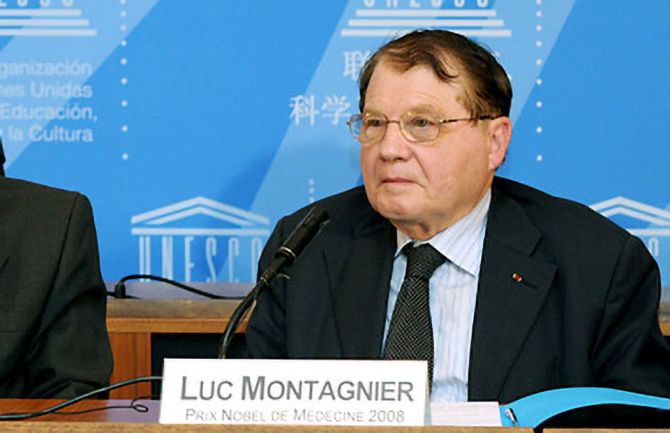
Press Statement
Co-discoverer of HIV, Luc Montagnier, has died at the age of 89
11 February 2022 11 February 2022GENEVA, 11 February 2022—The French virologist and co-discoverer of HIV, Luc Montagnier, sadly died this week. He was an expert on retroviruses and a pioneer in HIV science. He founded and directed the Viral Oncology Unit at the Pasteur Institute in France, where he led the team that discovered HIV, research that was first published in the journal Science in 1983.
He was one of the earliest advocates for promoting HIV prevention and treatment and for fighting against stigma and discrimination against people living with and affected by HIV. In 2008, he was jointly awarded the Nobel Prize in Physiology or Medicine for the discovery of HIV.
“Luc Montagnier dedicated his life to science and his co-discovery of HIV paved the way for research into and development of antiretroviral medicines, which have saved the lives of millions of people around the world,” said Winnie Byanyima, Executive Director of UNAIDS. “UNAIDS sends its heartfelt condolences to his family and friends at this difficult time.”
Since the start of the AIDS pandemic 79 million people have become infected with HIV and 39 million people have died of AIDS-related illnesses. In 2020, there were around 38 million people living with the virus 10 million of whom did not have access to treatment – demonstrating the urgent need to end the pandemic caused by the virus which was discovered by Luc Montagnier 40 years ago.
UNAIDS
The Joint United Nations Programme on HIV/AIDS (UNAIDS) leads and inspires the world to achieve its shared vision of zero new HIV infections, zero discrimination and zero AIDS-related deaths. UNAIDS unites the efforts of 11 UN organizations—UNHCR, UNICEF, WFP, UNDP, UNFPA, UNODC, UN Women, ILO, UNESCO, WHO and the World Bank—and works closely with global and national partners towards ending the AIDS epidemic by 2030 as part of the Sustainable Development Goals. Learn more at unaids.org and connect with us on Facebook, Twitter, Instagram and YouTube.

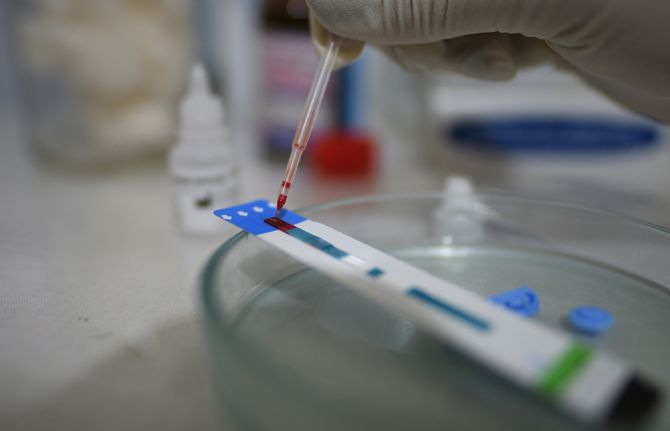
Press Statement
Identification of fast-spreading HIV variant provides evidence of urgency to halt the pandemic and reach all with testing and treatment
07 February 2022 07 February 2022Around 10 million people living with HIV are still not on antiretroviral therapy
GENEVA, 7 February 2022—Newly published research from the Netherlands has revealed the existence of a more transmissible and damaging variant of HIV. People living with the newly revealed HIV subtype experience double the rate of immune system decline (CD4 count), have higher HIV viral loads (amount of virus in the blood) and are vulnerable to developing AIDS two to three times faster after diagnosis than if they were living with other strains of the virus. The study, led by researchers from the University of Oxford’s Big Data Institute, was the first to discover this highly virulent variant of the subtype-B of HIV. The study also revealed that the variant has been circulating in the Netherlands for years and remains receptive to HIV treatment.
The HIV pandemic continues to take a life every minute and scientists have long worried about the evolution of new, more transmissible, variants of HIV. This newly identified variant does not represent a major public health threat but underscores the urgency of speeding up efforts to halt the HIV pandemic.
“Ten million people living with HIV worldwide are not yet on treatment, fuelling the continued spread of the virus and potential for further variants,” said Eamonn Murphy, UNAIDS Deputy Executive Director, Programme, a.i. “We urgently need to deploy cutting-edge medical innovations in ways that reach the communities most in need. Whether it’s HIV treatment or COVID-19 vaccines, inequalities in access are perpetuating pandemics in ways that harm us all.”
HIV remains the deadliest pandemic of our time—an estimated 79 million people have become infected with the virus, for which there is still no vaccine and no cure. Some 36 million people have died from AIDS-related illnesses since the start of the pandemic and 1.5 million people were newly infected with HIV in 2020. Of the 38 million people living with HIV today, 28 million are on life-saving antiretroviral therapy, keeping them alive and well and preventing transmission of the virus.
UNAIDS
The Joint United Nations Programme on HIV/AIDS (UNAIDS) leads and inspires the world to achieve its shared vision of zero new HIV infections, zero discrimination and zero AIDS-related deaths. UNAIDS unites the efforts of 11 UN organizations—UNHCR, UNICEF, WFP, UNDP, UNFPA, UNODC, UN Women, ILO, UNESCO, WHO and the World Bank—and works closely with global and national partners towards ending the AIDS epidemic by 2030 as part of the Sustainable Development Goals. Learn more at unaids.org and connect with us on Facebook, Twitter, Instagram and YouTube.
Contact
UNAIDS GenevaSophie Barton-Knott
tel. +41 79 514 68 96
bartonknotts@unaids.org
UNAIDS Media
communications@unaids.org

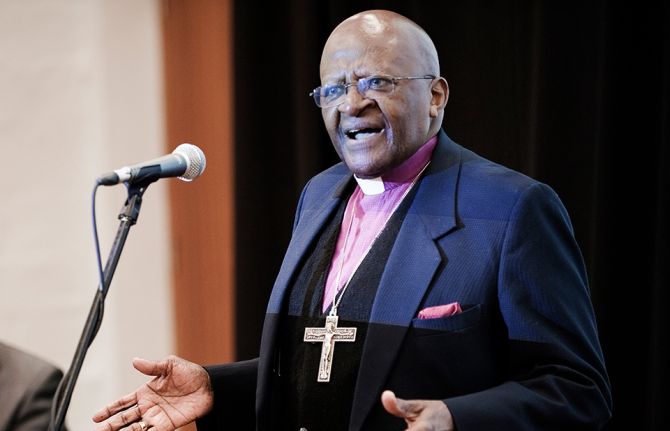
Press Statement
The global AIDS response has lost a great champion
26 December 2021 26 December 2021UNAIDS is deeply saddened at the passing of Archbishop Emeritus Desmond Tutu
GENEVA, 26 December 2021—UNAIDS is deeply saddened at the passing of Archbishop Desmond Tutu who fought against apartheid in South Africa and combated racism and injustice worldwide. He was a powerful voice in the fight against AIDS, combating denial, demanding access to treatment for all, calling out against discrimination of people living with HIV, and championing the human rights of lesbian, gay, bisexual and transgender people, women, and children. His work on HIV and tuberculosis prevention and treatment changed global paradigms and saved many lives.
“A giant has fallen. Archbishop Tutu was a freedom fighter, a holy man, a great hero who played a history-shaping role in the liberation of Africa,” said Winnie Byanyima, Executive Director of UNAIDS. “He was a leading light who brought global attention to injustice in a way few others could and a champion for the rights of all people living with and affected by AIDS. Millions are alive and free today because of the path he charted and the hope he brought to this world.”
Archbishop Tutu was outspoken in calling for an end to AIDS denialism in South Africa. He fought for access to lifesaving medicines. "People, not profits, must be at the centre of patent law for medicines," he said while calling on pharmaceutical companies to make AIDS medicines accessible. He was also a champion of rights of gay people. He likened laws that criminalize forms of human love as apartheid laws—”so obviously wrong”.
Archbishop Desmond Tutu was an advocate for preventing HIV infection in adolescents and young people. He co-chaired the UNAIDS commission on HIV prevention in 2011 that led to setting bold global targets for HIV prevention. He extolled on young people to take on the leadership on AIDS. “Bold and honest actions are needed, and we look to the next generation of leaders to bring about positive change in attitudes and actions,” said Archbishop Tutu while speaking with young leaders in Robben Island on HIV prevention.
“UNAIDS has lost a friend, guide and mentor,” said Ms Byanyima. “Our thoughts are with his family, the people of South Africa, and many around the world whose lives he touched and changed for the better.”
UNAIDS
The Joint United Nations Programme on HIV/AIDS (UNAIDS) leads and inspires the world to achieve its shared vision of zero new HIV infections, zero discrimination and zero AIDS-related deaths. UNAIDS unites the efforts of 11 UN organizations—UNHCR, UNICEF, WFP, UNDP, UNFPA, UNODC, UN Women, ILO, UNESCO, WHO and the World Bank—and works closely with global and national partners towards ending the AIDS epidemic by 2030 as part of the Sustainable Development Goals. Learn more at unaids.org and connect with us on Facebook, Twitter, Instagram and YouTube.
